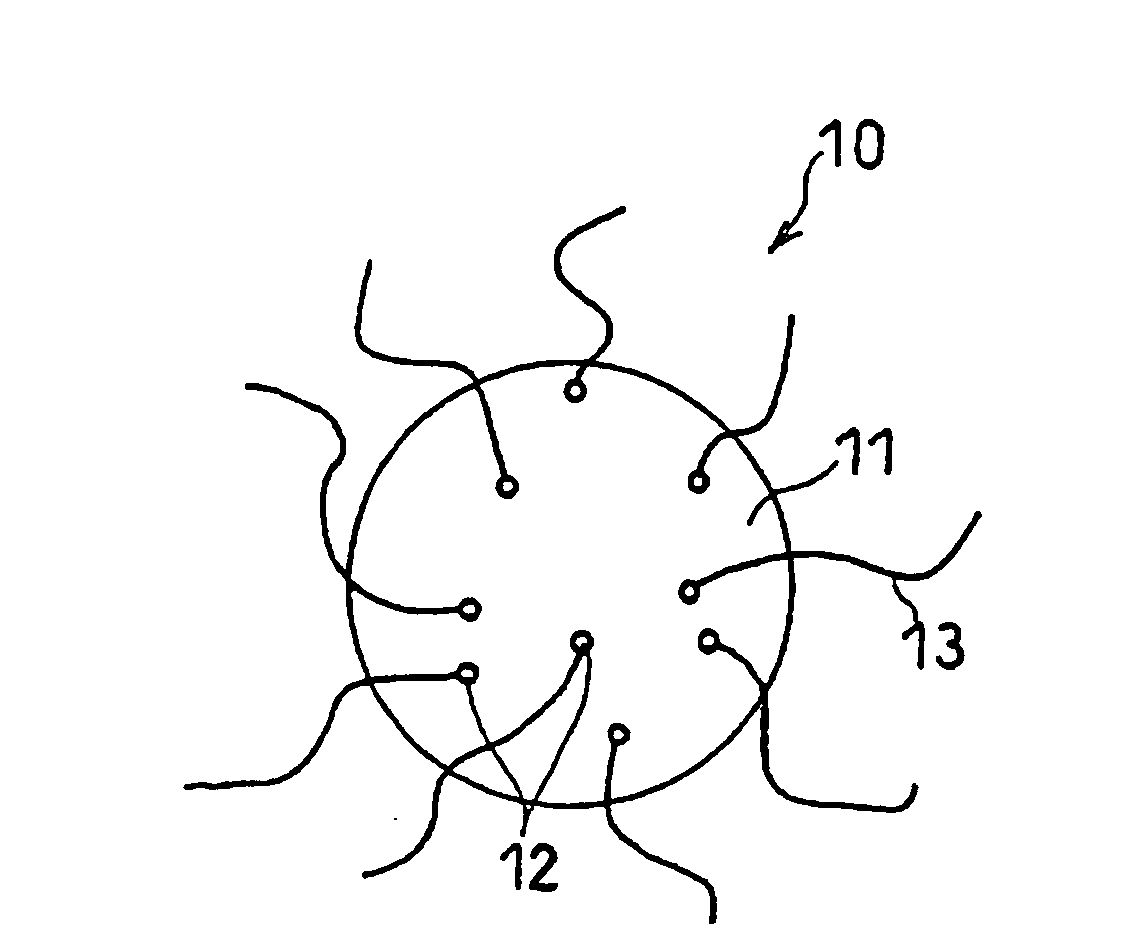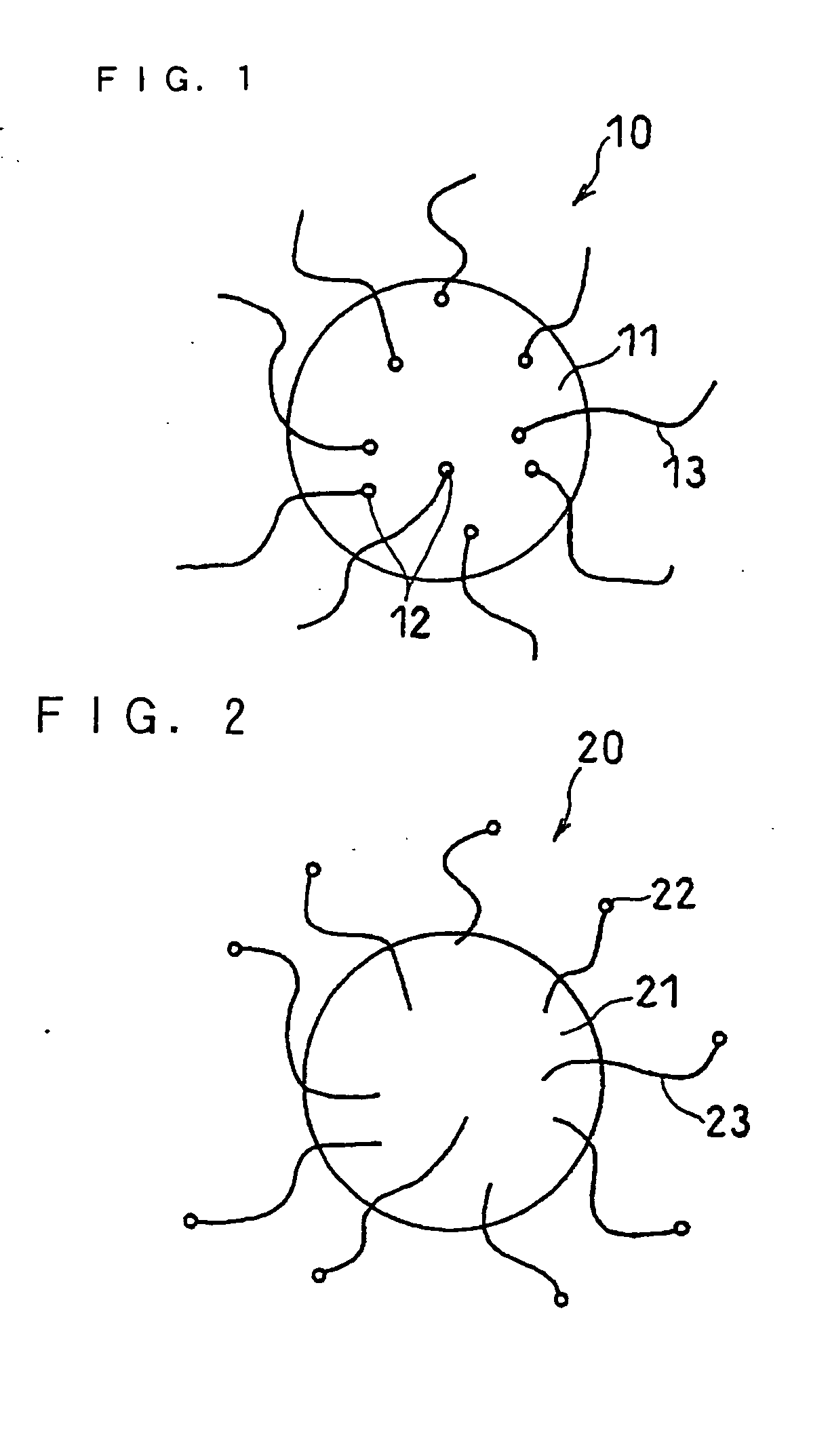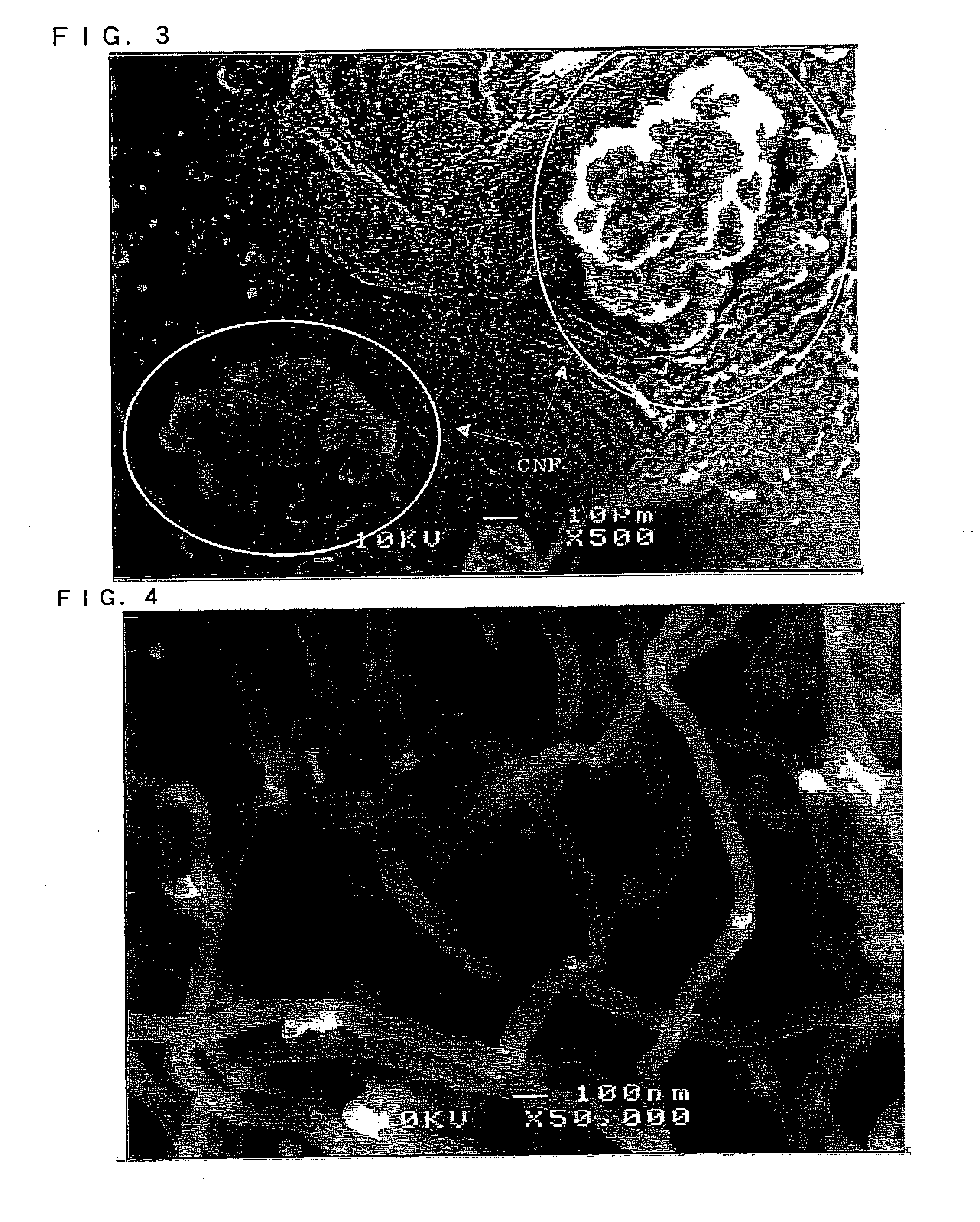Composite Particle for Electrode, Method for Producing the Same and Secondary Battery
a composite particle and electrode technology, applied in the direction of electrode manufacturing process, metal/metal-oxide/metal-hydroxide catalyst, etc., can solve the problems of destructing the electronic conductive network between the particles, poor conductivity of substitutes, and inability to obtain satisfactory charge/discharge characteristics, etc., to achieve excellent initial charge/discharge characteristics, excellent charge/discharge cycle characteristics, and high electronic conductivity
- Summary
- Abstract
- Description
- Claims
- Application Information
AI Technical Summary
Benefits of technology
Problems solved by technology
Method used
Image
Examples
example 1
[0160]In 100 g of ion-exchanged water, 1 g of nickel nitrate hexahydrate (guaranteed grade) manufactured by Kanto Chemical Co., Inc. was dissolved. The solution thus obtained was mixed with 100 g of silicon particles (Si) pulverized to 10 μm or less, manufactured by Kojundo Chemical Laboratory Co., Ltd. The mixture was stirred for 1 hour, and then the water was removed with an evaporator. Consequently, there was obtained an active material particle formed of the silicon particle that constitutes the electrochemically active phase and nickel nitrate supported on the surface of the silicon particle.
[0161]The silicon particles that support nickel nitrate were placed in a ceramic reaction vessel, and the temperature was increased to 550° C. in the presence of helium gas. Then, the helium gas was replaced with a mixed gas composed of 50% by volume of hydrogen gas and 50% by volume of methane gas, and the interior of the reaction vessel was maintained at 550° C. for 3 hours. Consequently,...
example 2
[0165]An electrode material B for a non-aqueous electrolyte secondary battery was prepared by carrying out the same operations as in Example 1 except that 1 g of cobalt nitrate hexahydrate (guaranteed grade) manufactured by Kanto Chemical Co., Inc. was dissolved in 100 g of ion-exchanged water in place of 1 g of nickel nitrate hexahydrate. The particle size of the cobalt particles supported on the silicon particles was approximately the same as that of the nickel particles in Example 1. The fiber diameter, the fiber length, and the weight proportion to the active material particle of the grown herringbone-shaped carbon nanofibers were approximately the same as those in Example 1. Also in this Example, the SEM observations identified the presence of fine fibers of 30 nm or less in fiber diameter in addition to fibers of approximately 80 nm in fiber diameter.
example 3
[0166]Silicon particles (20% by weight) pulverized to 10 μm or less and nickel particles (80% by weight) pulverized to 10 μm or less manufactured by Kanto Chemical Co., Inc. were mixed together. Shear stress was applied to the mixture thus obtained by means of the mechanical alloying method to prepare Ni—Si alloy particles having a mean particle size of 20 μm. An electrode material C for a non-aqueous electrolyte secondary battery was prepared by carrying out the same operations as in Example 1 except that the Ni—Si alloy particles thus obtained were used in place of the silicon particles. The particle size of the nickel particles supported on the Ni—Si alloy particles was the same as that of the nickel particles in Example 1. The fiber diameter, the fiber length, and the weight proportion to the active material particle of the grown tubular carbon nanofibers were approximately the same as those in Example 1. Also in this Example, the SEM observations identified the presence of fine...
PUM
| Property | Measurement | Unit |
|---|---|---|
| particle size | aaaaa | aaaaa |
| length | aaaaa | aaaaa |
| fiber diameter | aaaaa | aaaaa |
Abstract
Description
Claims
Application Information
 Login to View More
Login to View More - R&D
- Intellectual Property
- Life Sciences
- Materials
- Tech Scout
- Unparalleled Data Quality
- Higher Quality Content
- 60% Fewer Hallucinations
Browse by: Latest US Patents, China's latest patents, Technical Efficacy Thesaurus, Application Domain, Technology Topic, Popular Technical Reports.
© 2025 PatSnap. All rights reserved.Legal|Privacy policy|Modern Slavery Act Transparency Statement|Sitemap|About US| Contact US: help@patsnap.com



